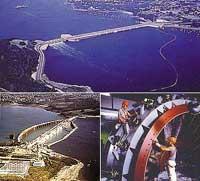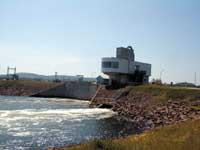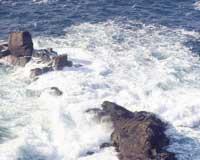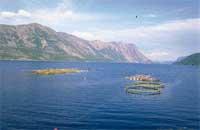Tidal energy, source of electricity
2000/10/22 Kortabarria Olabarria, Beñardo - Elhuyar Zientzia

During the Middle Ages, farmers who lived on the coast accumulated the water from the rivers during the tide and releasing the accumulated water at low tide made the water mills pass. Of course, both the fold and the low tide had to be remarkable, since we had to take advantage of the difference. Therefore, the desire to harness the energy of the tides is very old. Many things have changed from that basic use to the present day. XX. In the second half of the 20th century the engineers studied the subject and realized that although obtaining electricity from tides was technologically simple, economically unprofitable. In addition, environmental problems had to be taken into account, since the technique used until then was very harmful. However, technological advancement in the 1990s has allowed cheap energy from the seas to be no longer a dream, but a real opportunity.
Estuaries as a source of energy

Until recently the most selected places for the use of tidal energy have been estuaries, in which a large volume of water flows through a narrow space, leading to high speed currents. In these cases a dam is built at the entrance of the estuary and the access to the beginning of the pleamar is closed. Consequently, in the sea area of the dam the water level increases compared to that of the other party. In the last two hours of the tide the ports are opened and the sea water is directed towards the estuary through the turbines, generating electricity. When the high tide is at its peak, the ports are closed again and the water is left accumulated in the estuary during low tide. At the end of the low tide the ports open and the water flows from the estuary to the sea, the turbines move and continues to produce electricity. Estuarine plants are technologically suitable, but due to serious environmental problems, this dike technology has been ruled out. In fact, this type of plant deteriorates the habitat of the estuaries, the fish cannot function properly (many die trapped in the turbines), the urgent sediments can reduce the volume of the estuary... The photographs that can be seen in these pages belong to two of the mareales in operation in the world, Atlantic of Nova Scotia of Canada and La Rance of Normandy, built in 1967.
A new system has been developed based on similar technology but to avoid environmental problems: walled enclosures based on submarine soil, ponds. When the tide is above, the pond is filled with water, where the water is stored when the tide is low. At low tide the pond water and sea water are not at the same level and, with open ports, lettuce water is poured into the sea through turbines. Electricity is generated here. Once emptied, the raft water and seawater are at the same level. Then the access to the pond is closed and when the tide rises, the water from the sea and the lagoon will again be at different level. The opening of valves and the entry of sea water into the raft through the turbines will generate electric energy. When the pond is filled the cycle begins again
... This type of tidal power plant is not yet finished in the world, but there are projects like India or Alaska.
Behind the currents

Because the tides rise and fall, in the vicinity of the coast are often formed marine currents that can generate a large amount of energy, in addition to being daily. Therefore, it can be said that it is an uninterrupted energy. Tidal barrier technologies and tide turbines are currently being developed to obtain energy from marine currents. The technology of the tide barriers is similar to that of the dams in estuaries, located in the foothills or in the channels located between small islands, but water is not accumulated, the energy of the current is used directly to move the turbines. The main advantage of tide barriers is the possibility of installing electrical machinery (generators and transformers) over water.
On the other side are the tide turbines. These are more environmentally friendly than those that need a barrier or dam, as boats can continue to exploit and build the environment with much less material and work. And it is not seen or heard because it is under water. Despite being invisible and inaudible (if necessary), they can be a great source of energy like the rest of tidal energy systems.
It seems that the future in terms of using sea energy may be in the technology of tide turbines, as it offers better opportunities than others. However, the development of other alternatives would not be bad, as it could reduce the use of fossil fuels and boost renewables.
Published in 7

Gai honi buruzko eduki gehiago
Elhuyarrek garatutako teknologia






